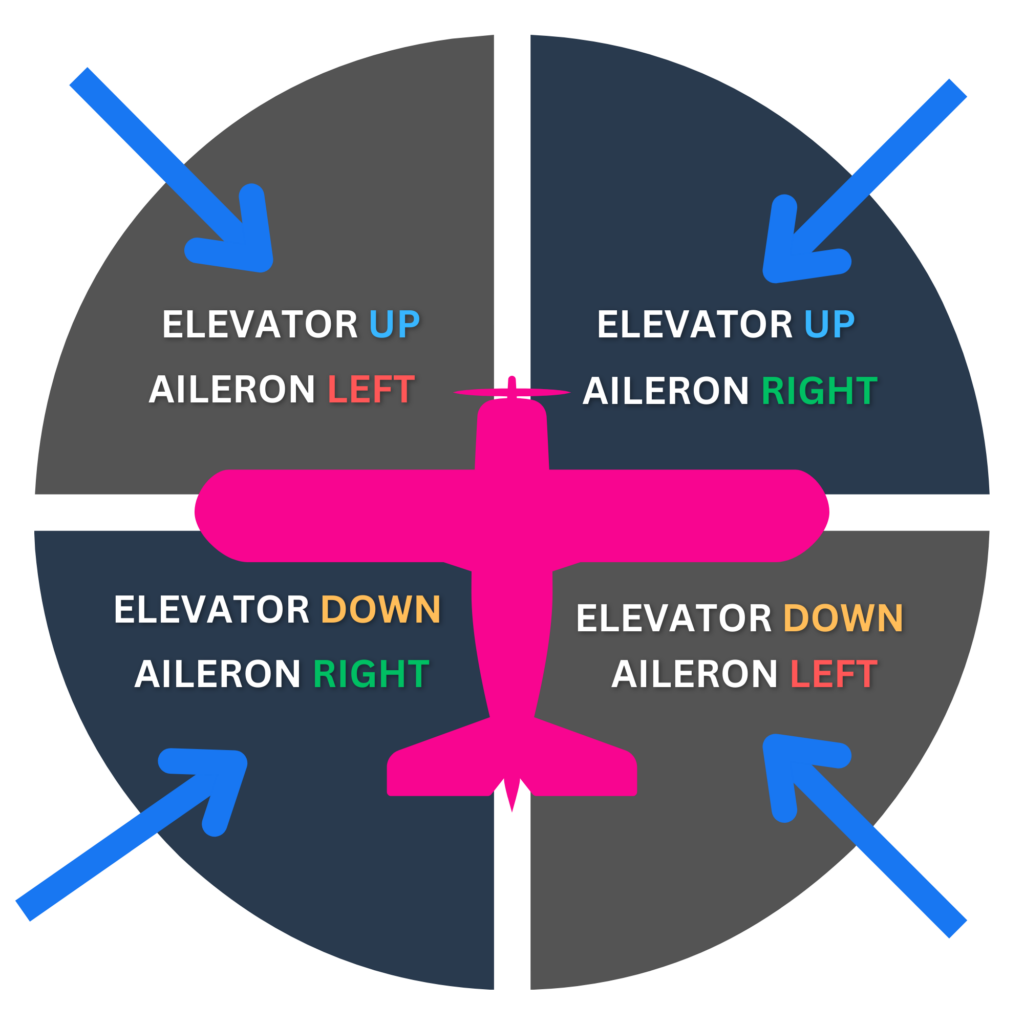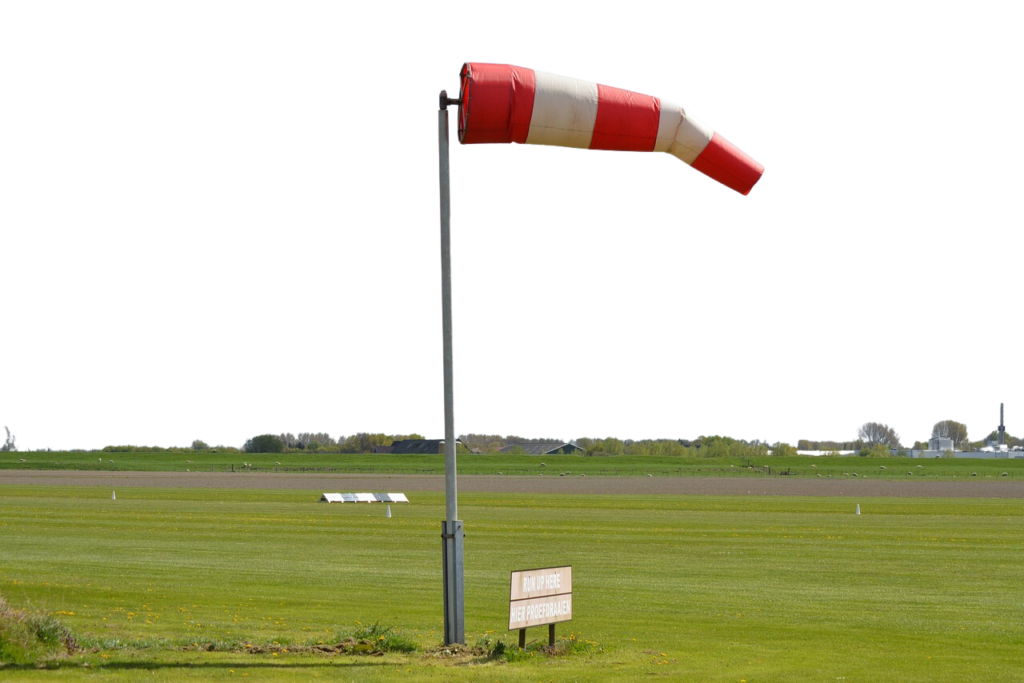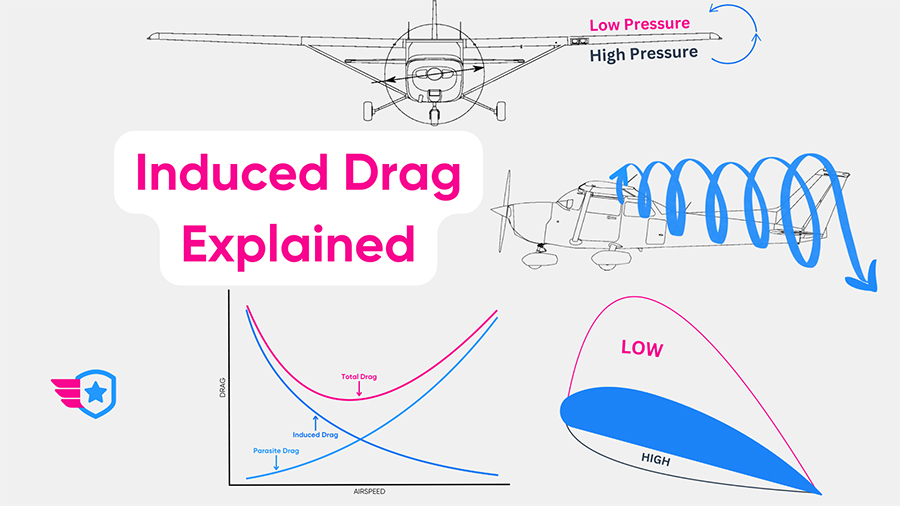Ever wondered what to do with the controls while taxiing in windy conditions? You’re not alone.
Let’s dive into the often-neglected intricacies of taxiing in the wind (and impress your instructor with proper taxiing techniques!).
How to Taxi with Wind
Taxiing involves using the rudder pedals for direction, and power for speed. But what about the yoke? Is it just along for the ride until we call upon it during takeoff? Definitely not!
In calm conditions, you should keep the yoke in a neutral or elevator-up position. This ensures the elevator doesn’t bounce all over the place during taxi.
However, when the winds kick up, everything changes.
Strong winds can have a significant effect on directional control, and can even cause the aircraft to tilt off of its wheels. To avoid a wing, tail, or prop strike, we need to use specific control inputs during taxi to ensure the aircraft remains firmly planted on the ground.
We’ll explain why we use these inputs in a moment, but here’s what you need to remember:
Climb into a headwind and dive away from a tailwind.
In other words if you have a:
- Headwind from the left: left aileron input and elevator up
- Headwind from the right: right aileron input and elevator up
- Tailwind from the left: right aileron input and the elevator down
- Tailwind from the right: left aileron input and elevator down

Taxiing With Headwinds
Consider taxiing into a headwind. It can lift your tail and potentially cause a prop strike, particularly when paired with a strong prop slipstream. To counteract this, pull back on the elevator.
Now, let’s say you’ve got a quartering headwind (i.e., a headwind from the side). The wind can lift the wing on the upwind side if you don’t keep the aileron up. So, keep that upwind aileron elevated to reduce the wind’s lifting effect.
Remember this as “climb into a headwind.”
Taxiing With Tailwinds
On the flip side, when taxiing with a tailwind, you’ll want to push the elevator down. This keeps the wind from getting under your tail and helps to prevent your aircraft from tipping forward.
Also, ensure the upwind aileron is down. This will “push” the wing toward the ground, preventing any tipping.
Imagine you’re “diving away from a tailwind.”
How To Determine the Wind Direction When Taxiing
Understanding wind direction is a key skill for any aviator. It’s also crucial when taxiing in windy conditions. Here’s how you can pinpoint the wind’s direction.
Windsocks

First and foremost, keep an eye out for windsocks. These are cone-shaped tubes placed around airports to indicate wind direction and speed. The thin end of the windsock points in the direction that the wind is blowing.
If the windsock is fully extended and horizontal, it indicates strong winds. If it’s drooping, the winds are light.
Weather Reports (METAR/ATIS)
A great way to check the wind direction is to check the latest METAR or ATIS. Remember, wind direction is the direction from which the wind is coming, not where it’s going.
Also keep in mind that the ATIS wind direction is magnetic, while the METAR wind direction is true.
Ask The Tower
If you want the most accurate picture of current wind direction and speed, request a “wind check” from the tower. They’ll provide you with the speed and direction that the wind is coming from in magnetic degrees.
Summary
Taxiing in windy conditions may seem daunting, but with the right techniques and a keen understanding of wind direction, it’s a challenge you can confidently navigate.
Remember the golden rules: “Climb into a headwind, dive away from a tailwind,” and keep your eyes on the windsocks while staying informed with METAR or ATIS reports. And when in doubt, don’t hesitate to ask for a wind check from the tower.
Master these techniques, and not only will you impress your instructor, but you’ll also set the groundwork for becoming a skilled and adaptable pilot.
Safe flying!



